Garmin Varia Vue Headlight and ‘Dash’ Cam

Pros
4k resolution
Automatic locking of footage
“Dashcam” setting
Up to 600 lumen light
Syncs with Garmin RCT715
Camera control through Edge bike computers
Automatic beam intensity when paired with an Edge
Cons
Mounting system
Low dynamic range
Lacks editing options
Weight
196g
Price
$550
Brand
Garmin
“], “filter”: { “nextExceptions”: “img, blockquote, div”, “nextContainsExceptions”: “img, blockquote, a.btn, a.o-button”} }”>
In the Velo Best Bike Lights buyer’s guide you’ll find a long list of lights for being seen and lights for seeing. There’s very few options that go beyond that. That’s not because of an oversight, there’s just not many out there.
Now Garmin is adding the Garmin Varia Vue to this small group of lights that do more than illuminate the road ahead.
This is both a light and a camera and it’s one of two with the other option being from Cycliq. Both options let you add a “dashcam” to your bike and help keep you safe should something happen.
I’ve spent the last couple of weeks testing to see what the Garmin Varia Vue is bringing to the table and which one you should buy. Let’s dive in.
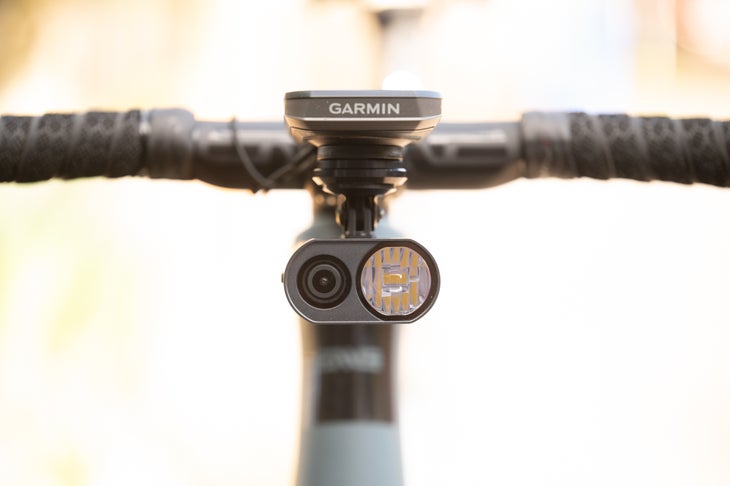
Quick hits: six things to know about the Garmin Varia Vue
- The longest battery life is 9 hours when recording with no light and 1080p resolution
- 600 lumens is the max brightness, but it’s only available in day flash mode
- The camera offers true 4k recording, but image stabilization requires a max 2688 x 2160 resolution
- It’s possible to connect the RCT715 to a Garmin Edge device for synced front and rear videos during a ride
- Edge bike computers offer full control of the device, plus there’s an app for use without a bike computer
- The mode you probably want to use is 4k video that continually records and writes over previous footage on the memory card, then locks files in the event of an incident
- More information and purchase is available on the Garmin website
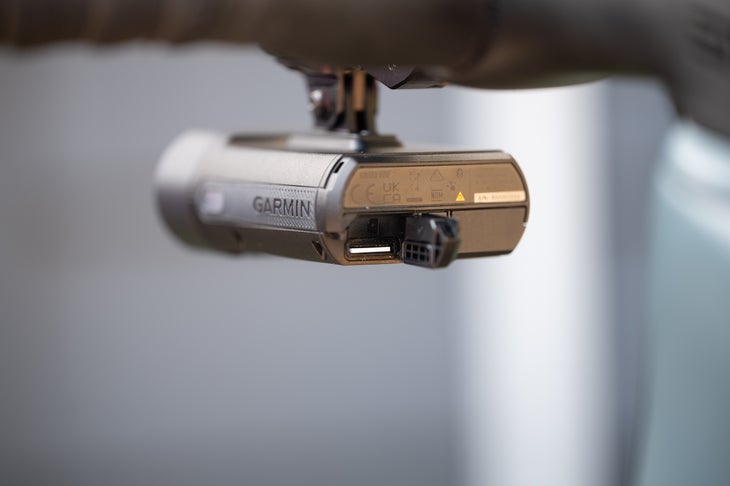
Garmin Varia Vue details
This review is a breath of fresh air. Garmin made a thing and it makes sense. There’s one competitor and a unique selling proposition. Easy, but let’s start with the specs and what this is.
First, the Garmin Varia Vue is a front light. You could use it as a see in the dark light but I wouldn’t say that’s ideal, and I don’t think it’s the point either. Instead, this is a be-seen light with a max of 600 lumens.
You aren’t actually going to experience 600 lumens though. That number is right on the lower edge of what I’d consider good for night riding without city lights, but it’s only available in day flash mode anyway. If you want a solid light that drops you to 550 lumens max. I’m not sure that’s the intended use either.
Instead, I think the Garmin vision is that you’ll pair this with an Edge bike computer.
“When paired with a compatible Edge bike computer, the headlight can adjust automatically based on the current lighting conditions, sunrise and sunset information, and speed. As your speed increases, the headlight shines brighter. At lower speeds, the light intensity is reduced to maximize battery life.”
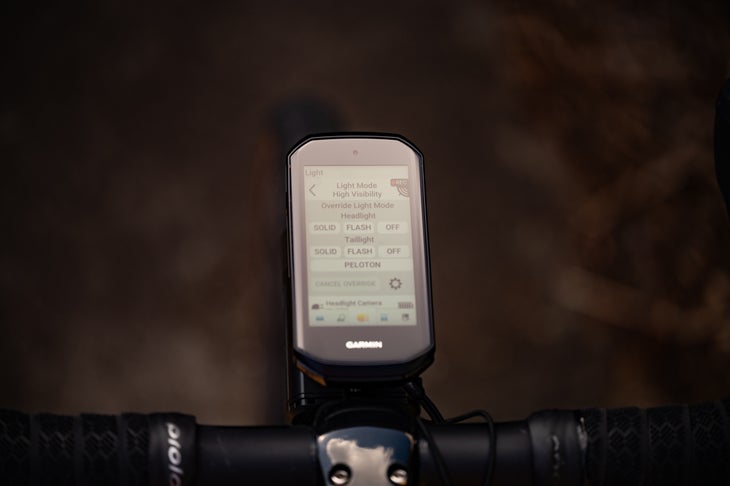
Pretty simple and you also have access to the Light Network feature. It’s something that lets your bike computer pair with your lights so you don’t have to turn them on and off and you can change settings mid-ride. I have mine set to come on/off when I press start/stop and flash at full brightness. There are other lights that can use this, but it’s magic and this one has it too.
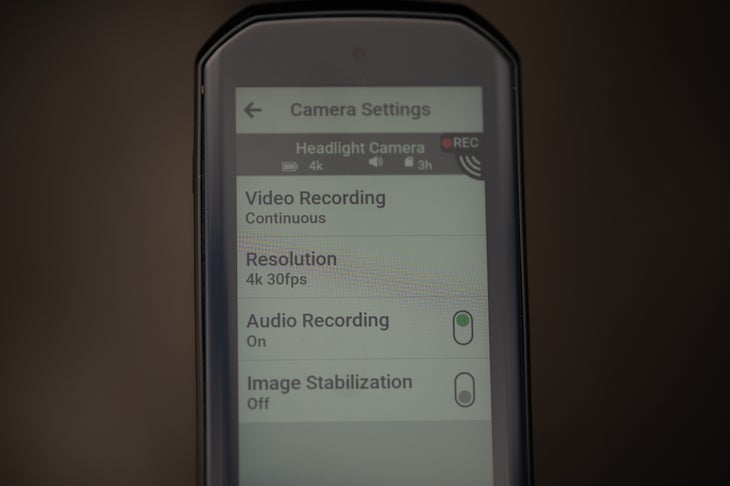
Then there’s a camera. You’ve got options for recording at 1080p up to true 4k with or without the light. The best battery life is at lower resolution and image stabilization tops out at 2688 x 2160 resolution. I’d say 4K with a flashing light is likely the expected use and that gives you 5-hours of burn time from the 1800 mah battery.
Like the light, the obvious concept is that you’ll pair this functionality with an Edge head unit. In that scenario you not only get the Light Network controls but a tap of the screen, or a press of the button, brings up the controls and settings. You can choose different resolutions and sound or no sound plus there are overlays available for GPS (coordinates), date and time, and speed. There’s also buttons to record a 2-minute clip or start and stop a recording. Those are secondary controls though.
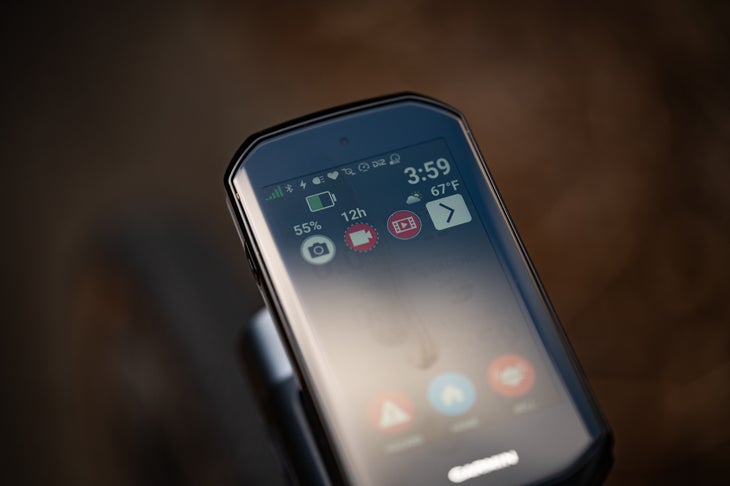
The primary use of this is as a dash cam. You can turn this functionality off but the idea is that you leave this running and as the camera fills the memory card it will start deleting the oldest footage. The files are 2-minute clips in this mode and if there’s an incident a 90-second recording (starting 15 seconds before) will drop into a protected folder. In case you are wondering, Garmin doesn’t spell out exactly what triggers an incident.
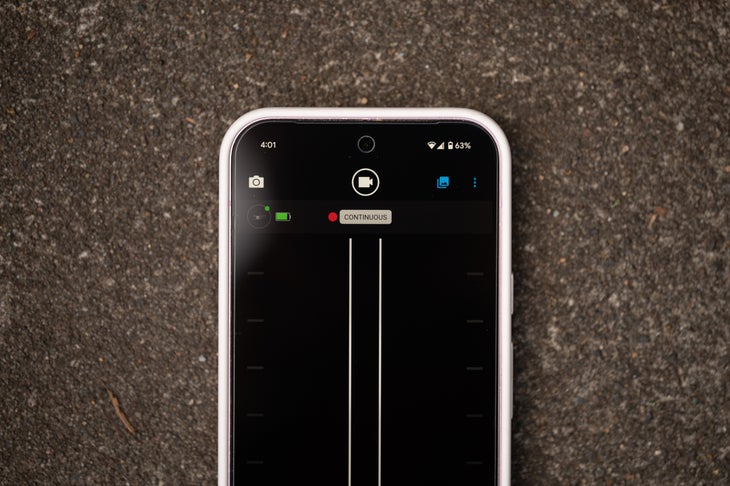
Now there is also an app. If you want to use your phone instead of an Edge computer, that works too. Alternatively the app will give you access to the files on the device. Be warned though, you can’t transfer files over Bluetooth so it’ll connect via wifi, and this is generally a pain. The same is true of Insta360 and Nikon, plus others, but it’s always a hassle. Instead just connect the camera to a computer via USBC and the files are easy to access with standard mp4 and jpg formats.
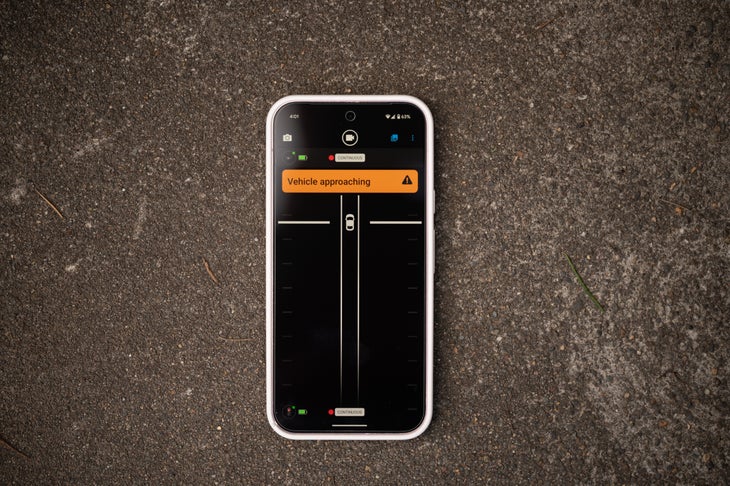
You can also make use of the paid Vault system. For $9.99 a month it will upload video to the cloud but it only works via your phone or wifi so it’s not some kind of instant backup system. You are still relying on that memory card being usable after a crash.
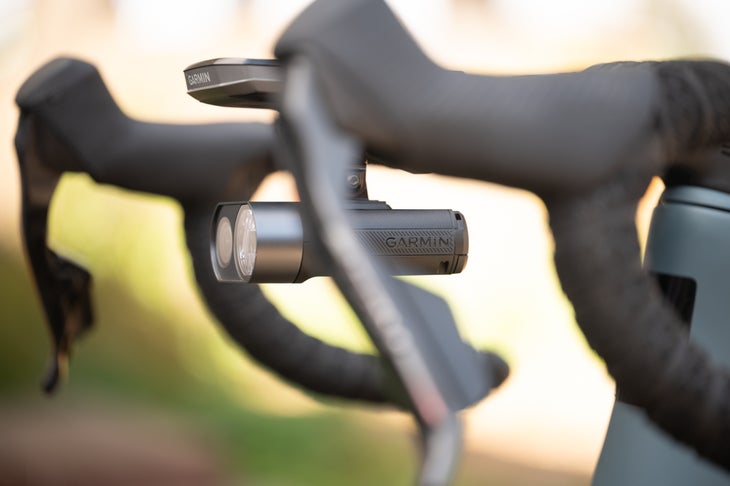
Ride experience
That’s a bunch of specs and details but you are probably going to ignore it all when you actually use the Garmin Varia Vue. Put it in 4k mode, let the light flash, and hope to forget about it. You’ve got 5 hours.
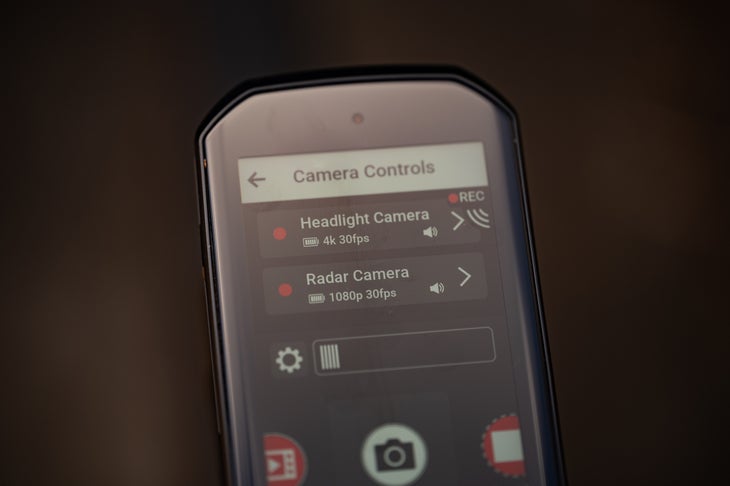
If that’s not long enough, you might switch to no light and get 6-hours. Still not enough? This isn’t the right system for you but keep in mind that Clyliq only offers 7-hours max and that drops to a lower quality. You can also drop the quality on the Varia Vue to get more battery but the two don’t quite match up in terms of resolution and battery life specs.
Cycliq offers 3k recording and 7 hours of battery life with no light. Garmin offers 4k recording and 6 hours of battery life, but there’s no image stabilization at the higher resolution.
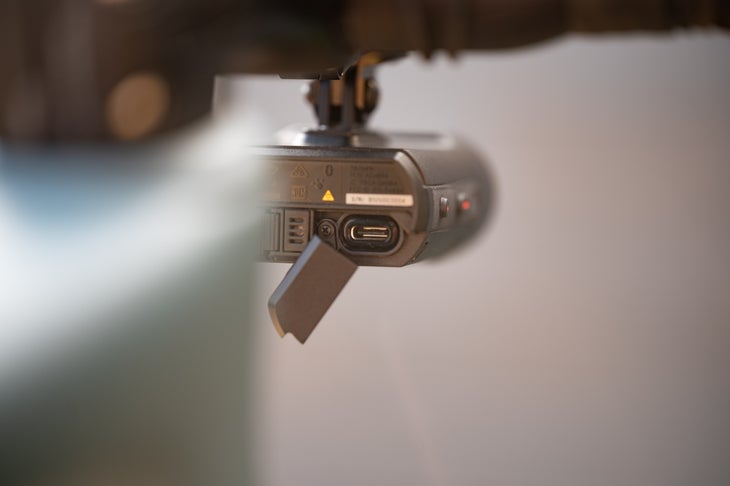
If you are comparing what I just said to other sources, 4k doesn’t always seem to mean 4k. Cycliq claims 4k recording and only offers 3k. Garmin claims 4k and offers it but will let you choose 4k with image stabilization in the settings only to produce 3k recordings.
I’m choosing not to overthink this. Better quality for less battery life is the exchange. You can decide 3k is enough and you want the extra hour by choosing Cycliq. Or you can take 4k and go with Garmin.
The reason I’m not overthinking this too much is because that’s not actually the buying proposition. The real magic of the Garmin Varia Vue is what happens when you pair both a Garmin RCT715 and the Varia Vue to an Edge unit.

In that use scenario, you get wrap-around video coverage that’s in sync and you get controls that are easy to access while riding. In the event of an incident you’d have audio and video from two points of view. You can also easily tap a button and start a 2-minute recording (or longer if you want to deal with stopping it) on both cameras. I had fun with that racing a friend. Unfortunately, it also showed off the lack of video quality.
This is not an action camera. The quality isn’t there. You get a ton of barrel distortion and the dynamic range is pretty awful with muddy darks and blown highlights. If an action camera is what you want then check out the Insta360 Ace Pro 2. The footage is far better.
Note: The end of the video above has footage off the camera to check quality. There’s also more action cam video midway and I managed to almost get hit by a duck which I included right at the end (for fun).
Mostly I mention this because it’s a shame. If you could have two video feeds of that quality in sync and controlled by your bike computer it would be very impressive. It also would not have a light or the battery life of the Varia Vue. Oh well, that’s a technology problem not an issue with a Garmin product.
As far as actual problems with the Garmin Varia Vue, the first is more of a point of comparison. Cycliq lets you do some basic editing in the app and Garmin doesn’t. I’m not sure how practical that actually is given the quality and use case but it’s missing.
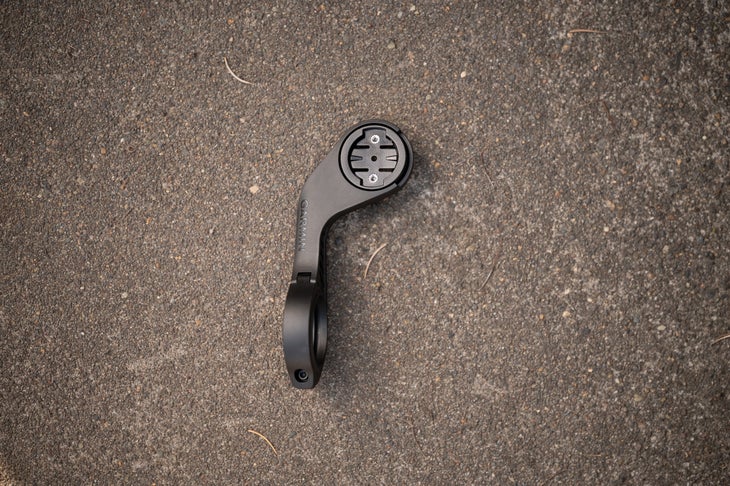
What really bugs me is the mount that Garmin uses. If you’ve got standard round bars, go ahead and skip this. For anyone not able to use the Garmin out-front mount, you are going to be annoyed. The mount that the Varia Vue uses is a standard GoPro style mount.
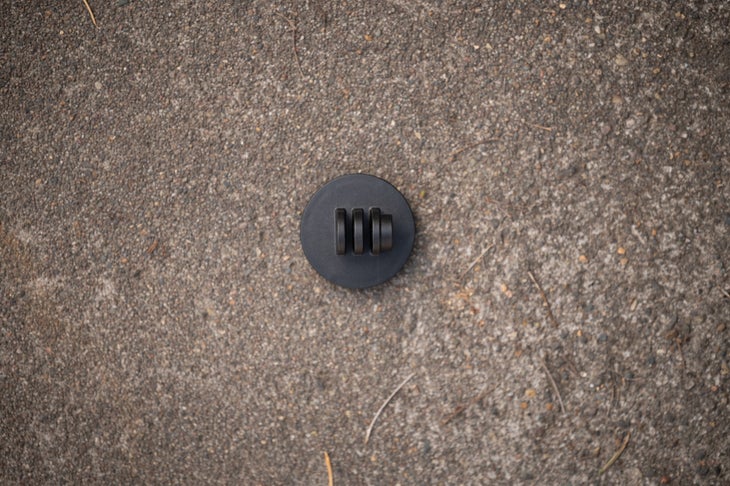
No problem, except it’s a camera and a light, meaning angle matters. Anyone with a nice aftermarket or integrated mount can’t use the included GoPro to female Garmin adapter. Instead you’d mount it direct … then never remove it so you can avoid having to fix the angle.
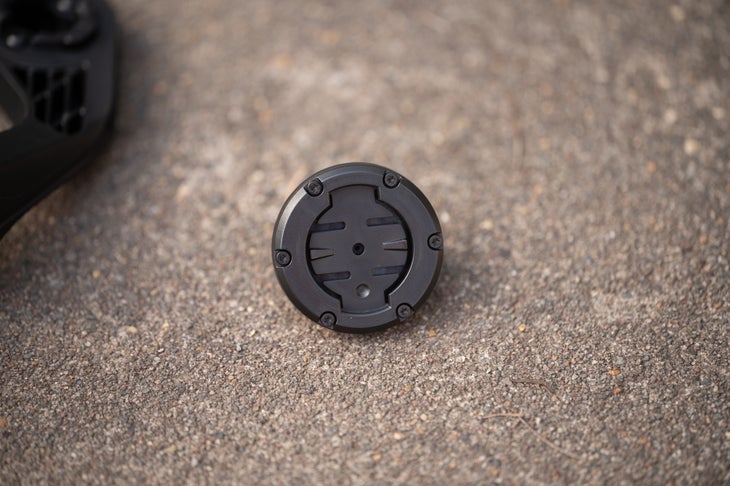
What you actually want is for the light to have a male Garmin quarter turn mount. Then the adapter would provide a quick-release system when attached to the underside of every out-front mount on the market.

Instead you are going to find yourself scouring obscure listings looking for a solution. I did the same and found one from Fidlock that might work in the middle and one from OCH Parts that you could, potentially, use with the included adapter. No idea if either is a good idea. I’d use the leash that comes in the box attached to something secure in case it all falls apart.
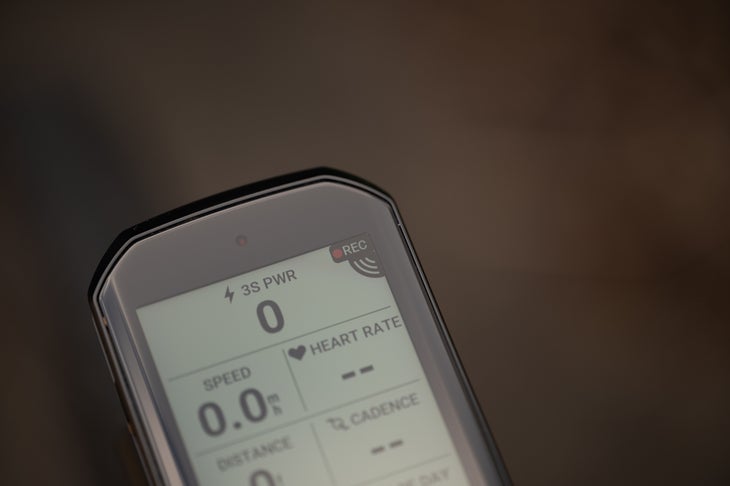
Conclusion
I called out three problems with the Garmin Varia Vue. The first is that I hate the mount system. Fortunately, I think that’s a solvable problem. Then there’s the editing thing. For me, this isn’t an issue either because I use Premier.
If that’s not you, there’s also free software you can dive into or you can just put it on Instagram and use the built-in upload system. It’s more than enough to share a clip of you crushing a friend or a car cutting you off.
The last negative is really about the nature of this product. It’s not an action camera, and I wish it was. The ecosystem is so good I just wish the video quality was better.
Instead this is a dash cam. That limits the competition to one brand, Cycliq. If you buy into the whole ecosystem, then you get a better quality rear camera in the Fly6 Pro and a better quality front camera in the Garmin Varia Vue. The price difference for the package is $150 extra for Garmin, but you get a rear radar.
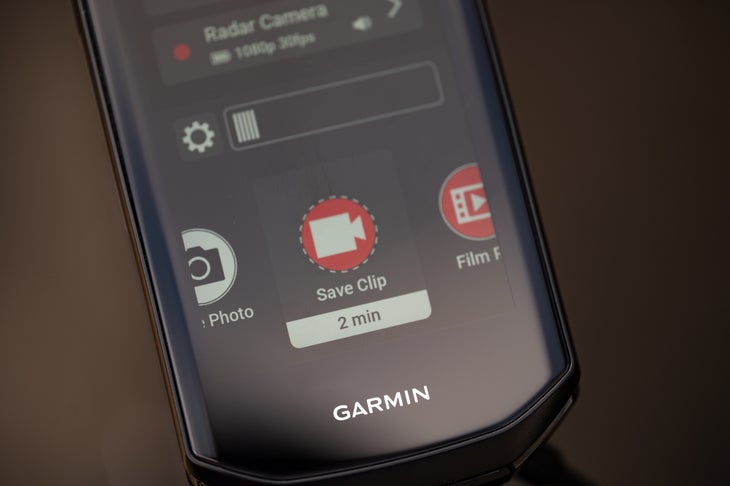
Garmin Varia is the one thing I never, ever, regret recommending. I never ride without it and it’s incredible. The Garmin RTL515 runs $200, so consider it included without a discount. Of course, the RTL 515 is often priced at $150 so that does complicate the price discussion a bit, plus there should be a discount when buying an ecosystem, but the bottom line remains the same.
Both Cycliq and Garmin offer a dash cam system. Both work fine for seeing plates and as lights to catch attention. Unfortunately for Cycliq, choosing that system means no rear radar and no control from your head unit. That puts Garmin ahead.
Even if you are only considering a front light/camera, I’d still recommend Garmin. The Garmin Varia Vue has better quality video, and you might expand later.




